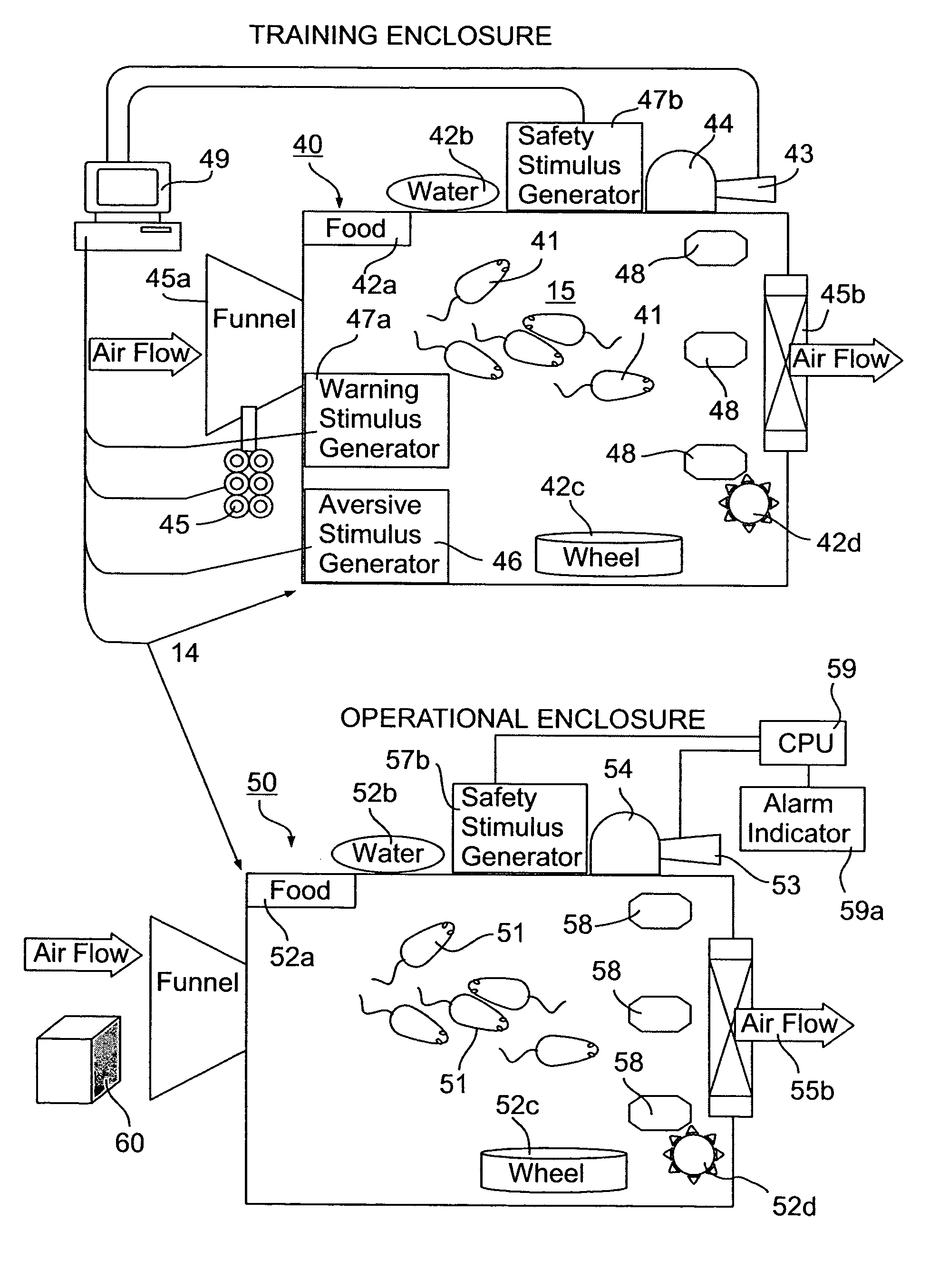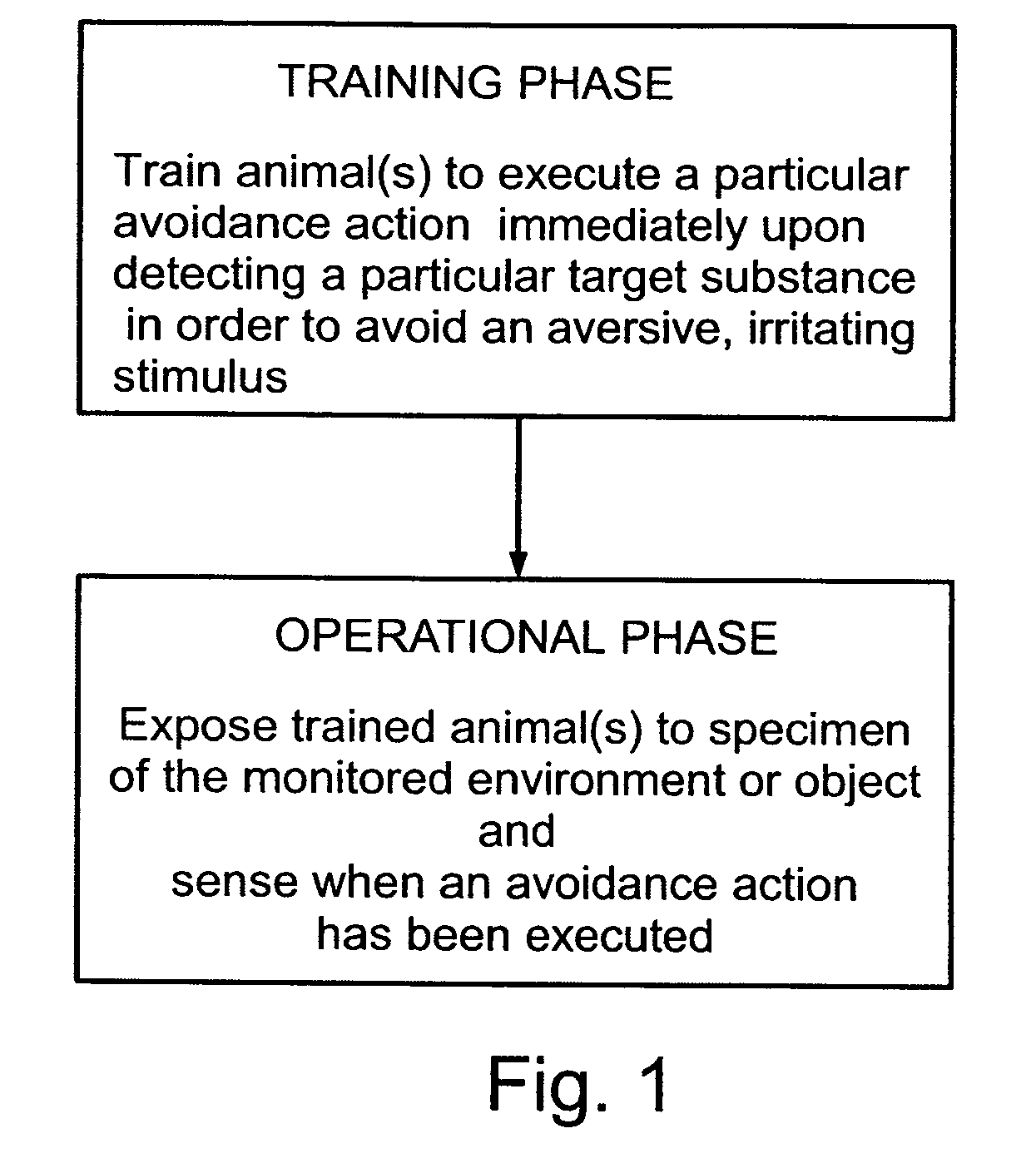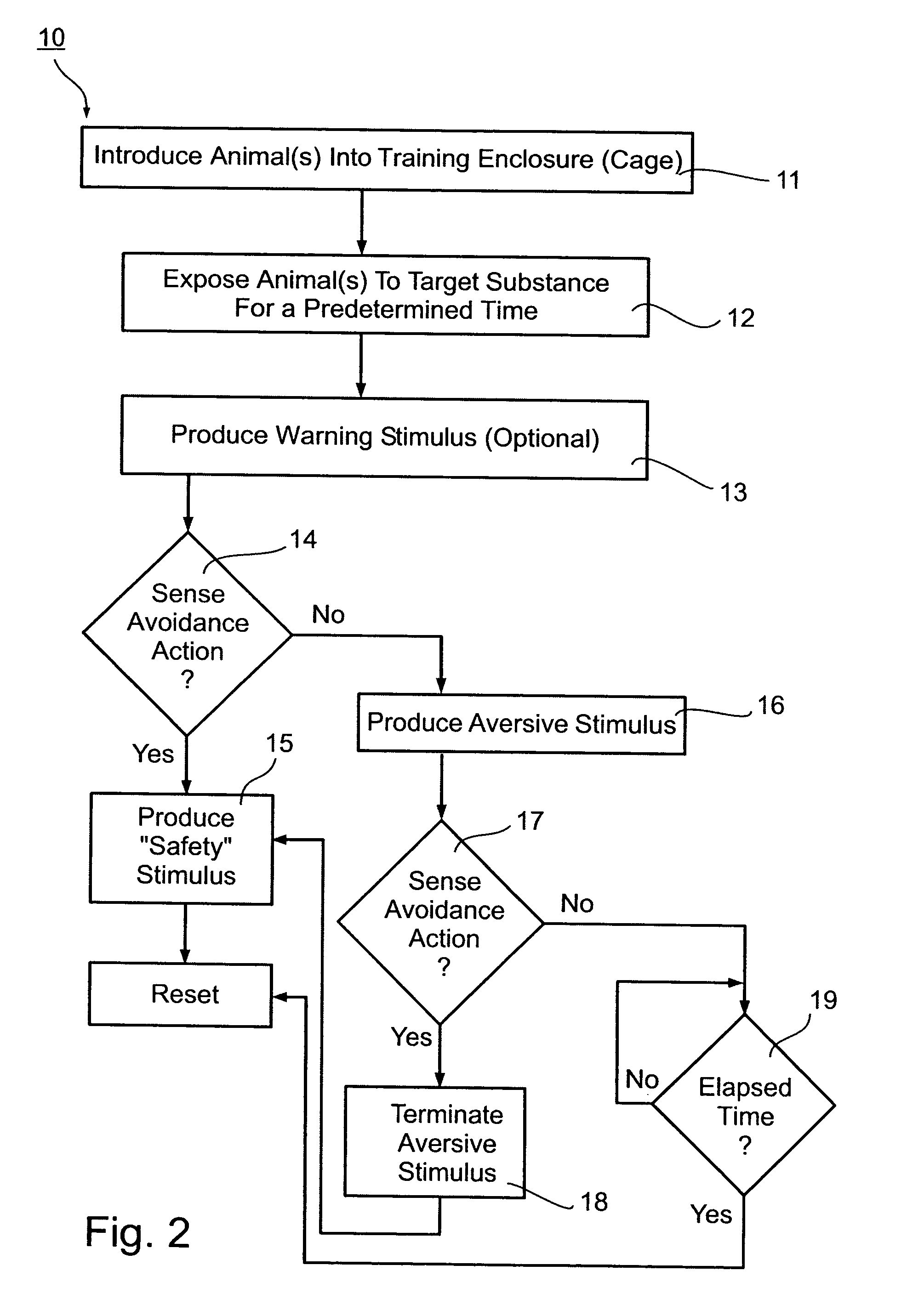Method and Apparatus Utilizing Animals for Detecting Target Substances
- Summary
- Abstract
- Description
- Claims
- Application Information
AI Technical Summary
Benefits of technology
Problems solved by technology
Method used
Image
Examples
Embodiment Construction
[0040]FIG. 1 is a block diagram illustrating the two phases in the overall method, namely the training phase wherein one or more animals are trained to execute an avoidance action immediately upon detecting a particular target substance in order to avoid an aversive stimulus; and the operational phase, involving exposing the animal or animals to a specimen of the monitored environment, and sensing when an avoidance action is executed by the animal or animals. In most cases, the animal or animals would be land animals or birds, in which case the target substances would be target odors in the monitored environment, and the invention is therefore described below with respect to such an application. It is contemplated, however, that the target substances to be detected may be substances of extremely low concentration in a body of water, in which case fish could be trained in accordance with the present invention to detect such a target substance.
[0041]FIG. 2 is a flow diagram illustrati...
PUM
 Login to View More
Login to View More Abstract
Description
Claims
Application Information
 Login to View More
Login to View More - Generate Ideas
- Intellectual Property
- Life Sciences
- Materials
- Tech Scout
- Unparalleled Data Quality
- Higher Quality Content
- 60% Fewer Hallucinations
Browse by: Latest US Patents, China's latest patents, Technical Efficacy Thesaurus, Application Domain, Technology Topic, Popular Technical Reports.
© 2025 PatSnap. All rights reserved.Legal|Privacy policy|Modern Slavery Act Transparency Statement|Sitemap|About US| Contact US: help@patsnap.com



